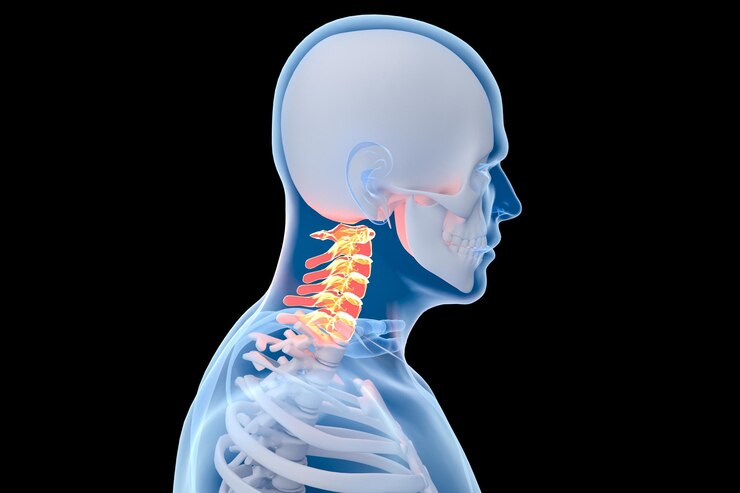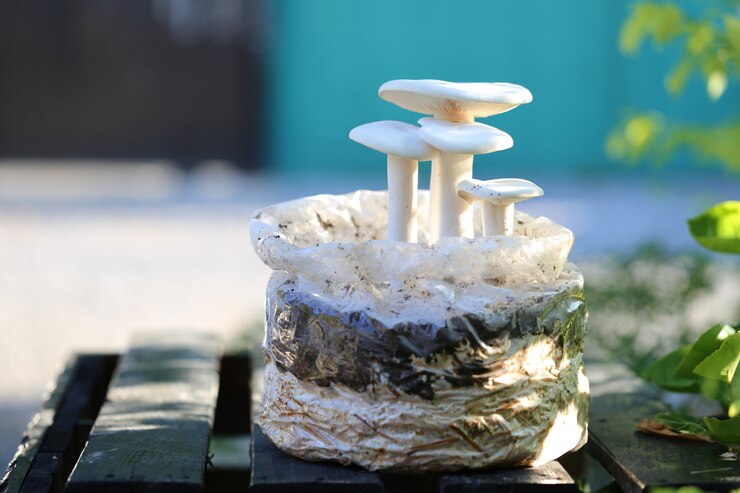Yoga Poses for Relieving the Pain of Turtle Neck Syndrome
Do you find yourself constantly plagued by neck pain, stiffness, and discomfort? If so, you may be suffering from Turtle Neck Syndrome. This common condition affects countless individuals and can greatly impact your daily life. But fear not! There is a natural solution that could bring relief to your suffering – yoga.
In this blog post, we will explore the world of Turtle Neck Syndrome and uncover the incredible benefits that yoga can offer in relieving its symptoms. We’ll also provide you with a list of recommended yoga poses specifically designed to target this troublesome ailment. So roll out your mat, take a deep breath, and get ready to embark on a journey towards greater comfort and freedom from neck pain. Let’s dive in!
Understanding Turtle Neck Syndrome
Turtle Neck Syndrome, also known as forward head posture or text neck, is a common condition caused by the prolonged and incorrect positioning of the head and neck. In today’s digital age, where we spend hours hunched over our smartphones and computers, this syndrome has become increasingly prevalent.
The main characteristic of turtle neck syndrome is the forward protrusion of the head, which puts excessive strain on the muscles and ligaments in the neck. This can lead to various symptoms such as neck pain, stiffness, headaches, shoulder tension, and even numbness or tingling in the arms. It is important to understand this condition in order to effectively address it through appropriate measures like yoga poses specifically designed for relieving turtle neck syndrome.
Benefits of Yoga for Relieving Turtle Neck Syndrome
Yoga is known for its numerous benefits, and relieving turtle neck syndrome is one of them. This ancient practice offers a holistic approach to healing and strengthening the body, including the neck area. By incorporating specific yoga poses into your routine, you can find relief from the pain and discomfort caused by turtle neck syndrome.
Yoga helps improve posture, which plays a crucial role in alleviating turtle neck syndrome. The gentle stretches and movements in various yoga poses help lengthen and strengthen the muscles in the neck, upper back, and shoulders. This improved alignment reduces strain on the cervical spine and promotes better posture habits throughout daily activities.
Additionally, practicing yoga enhances flexibility in these areas of tension. Through consistent practice of asanas (poses) like Child’s Pose (Balasana), Cat-Cow Pose (Marjariasana-Bitilasana), Downward Facing Dog Pose (Adho Mukha Svanasana), Shoulder Rolls, Neck Stretches, Bridge Pose (Setu Bandhasana), you can release tightness that contributes to turtle neck syndrome symptoms.
Recommended Yoga Poses for Relieving Turtle Neck Syndrome
When it comes to relieving the pain and discomfort of Turtle Neck Syndrome, incorporating specific yoga poses into your routine can make a world of difference. These poses target the muscles in the neck, shoulders, and upper back, helping to release tension and improve flexibility.
One highly beneficial pose for Turtle Neck Syndrome is Child’s Pose (Balasana). This gentle stretch allows you to rest your forehead on the ground while stretching out your arms forward, providing a soothing release for your neck and shoulders. Another effective pose is Cat-Cow Pose (Marjariasana-Bitilasana), which involves alternating between arching your spine like a cat and extending it like a cow. This movement helps to mobilize the entire spine while gently stretching the neck.
A great pose for both strengthening and stretching is Downward Facing Dog Pose (Adho Mukha Svanasana). In this pose, you create an inverted V-shape with your body by placing hands on the ground in front of you and lifting your hips towards the ceiling. This posture helps open up tight shoulders and elongates the spine, offering relief from Turtle Neck Syndrome. Additionally, practicing shoulder rolls and neck stretches throughout your day can help alleviate tension in these areas. Bridge Pose (Setu Bandhasana) is another helpful asana that targets not only the neck but also strengthens other parts of our body such as hamstrings.
Consistency is key when practicing yoga for Turtle Neck Syndrome relief. Try incorporating these poses into your daily routine or consult with a qualified yoga instructor who can guide you through them safely. Keep exploring different postures until you find what works best for you!
Child’s Pose (Balasana)
Child’s Pose, also known as Balasana, is a gentle and restorative yoga pose that can provide relief from the discomfort of Turtle Neck Syndrome. This pose allows you to relax your neck and shoulders while gently stretching the spine.
To practice Child’s Pose, start by kneeling on the floor with your knees spread wide apart and your big toes touching. Sit back onto your heels and slowly lower your torso down so that it rests between your thighs. Extend your arms forward or place them alongside your body with palms facing up. Take deep breaths in this position, allowing yourself to let go of tension and find comfort in the gentle stretch.
By incorporating Child’s Pose into your yoga routine, you can help alleviate the pain associated with Turtle Neck Syndrome while fostering relaxation and tranquility in both mind and body. Give it a try today!
Cat-Cow Pose (Marjariasana-Bitilasana)
Cat-Cow Pose, also known as Marjariasana-Bitilasana, is a fantastic yoga pose for relieving turtle neck syndrome. This gentle flowing movement helps to stretch and strengthen the neck, shoulders, and spine.
To practice Cat-Cow Pose, start on all fours with your hands directly under your shoulders and your knees hip-width apart. As you inhale, arch your back upward like a cat while dropping your head down towards the ground. Then as you exhale, round your spine downward like a cow while lifting your head up towards the ceiling. Repeat this fluid motion several times to release tension in the neck and improve flexibility in the spine.
This dynamic stretching of Cat-Cow Pose not only provides relief from turtle neck syndrome but also promotes better posture and spinal alignment. It allows for increased blood circulation to these areas which can help reduce inflammation and alleviate discomfort caused by excessive strain or poor posture throughout the day. Incorporate this pose into your daily yoga routine to experience its full benefits for relieving turtle neck syndrome!
Downward Facing Dog Pose (Adho Mukha Svanasana)
The Downward Facing Dog Pose, also known as Adho Mukha Svanasana in Sanskrit, is a popular yoga pose that can be extremely beneficial for relieving the pain of Turtle Neck Syndrome. This pose involves stretching and lengthening the spine while strengthening the arms and shoulders.
To practice this pose, start on all fours with your hands shoulder-width apart and your knees hip-width apart. Pressing firmly through your palms, lift your hips up towards the ceiling while straightening your legs. Imagine creating an inverted “V” shape with your body. Allow your head to hang between your arms and relax any tension in the neck and shoulders. Take deep breaths as you hold this position for a few breath cycles.
Downward Facing Dog Pose helps to stretch and elongate the muscles in the neck, back, hamstrings, and calves which can provide relief from Turtle Neck Syndrome symptoms such as stiffness and pain. It also improves blood circulation to these areas promoting healing and reducing inflammation. Regular practice of this pose can help improve posture by strengthening core muscles which will further support proper alignment of the neck and alleviate strain caused by poor posture habits or prolonged sitting at a desk job.
Shoulder Rolls and Neck Stretches
To alleviate the discomfort caused by turtle neck syndrome, incorporating shoulder rolls and neck stretches into your yoga routine can be highly beneficial. These gentle movements help to release tension in the shoulders and neck, promoting relaxation and improved flexibility.
Start by sitting comfortably with a straight spine. Gently roll your shoulders back, feeling the tension melt away with each movement. As you do so, let your head follow the motion, allowing for a gentle stretch in the neck muscles. Continue this rolling motion for a few repetitions, focusing on maintaining deep breaths throughout.
Next, bring your attention to the neck stretches. Slowly tilt your head to one side, bringing your ear closer to your shoulder without any force or strain. Hold this position for a few breaths before repeating on the other side. Be mindful of keeping both shoulders relaxed during these stretches.
By adding shoulder rolls and neck stretches to your regular yoga practice, you can effectively reduce pain and stiffness associated with turtle neck syndrome while promoting overall well-being in these areas of concern!
Bridge Pose (Setu Bandhasana)
The Bridge Pose, also known as Setu Bandhasana, is a yoga pose that can provide immense relief for individuals suffering from Turtle Neck Syndrome. This pose helps to open up the chest and shoulders, while also strengthening the neck muscles. To practice this pose, lie on your back with your knees bent and feet hip-width apart. Press your feet into the mat and lift your hips towards the ceiling, coming onto your upper back and shoulders. Interlace your hands underneath you and gently roll your shoulders together.
As you hold this pose, focus on lengthening through the spine while keeping the neck relaxed. Take deep breaths in and out to deepen the stretch in your chest and shoulders. The Bridge Pose not only releases tension in these areas but also improves posture by correcting rounded shoulders commonly associated with Turtle Neck Syndrome. Practice this pose regularly to experience its full benefits for relieving pain caused by turtle neck syndrome!
Precautions and Tips for Practicing Yoga with Turtle Neck Syndrome
When practicing yoga to relieve turtle neck syndrome, it’s important to take certain precautions and follow some helpful tips. Listen to your body and never push yourself beyond your limits. If a pose causes discomfort or pain in your neck, modify it or skip it altogether. It’s crucial to maintain proper alignment during each pose, keeping the neck neutral and elongated. Avoid any sudden movements that could strain the neck muscles.
Warm up before starting your yoga practice by gently stretching the neck muscles. This will help increase blood flow and flexibility while reducing the risk of injury. Additionally, use props such as blankets or blocks for support during poses like shoulder rolls or bridge pose if needed. Remember to breathe deeply throughout each movement, allowing oxygen to flow freely into tense areas of the body.
By taking these precautions and following these tips while practicing yoga for turtle neck syndrome relief, you can experience greater comfort and avoid exacerbating any existing issues in your neck area. Stay mindful of your body’s signals and modify as necessary for a safe yet effective practice!
Conclusion
Incorporating yoga into your daily routine can be a game-changer when it comes to relieving the pain and discomfort of Turtle Neck Syndrome. By practicing these recommended yoga poses consistently, you can gradually strengthen your neck muscles, improve flexibility, and promote better posture.
Remember, it’s important to listen to your body and practice with caution. If any pose causes discomfort or exacerbates your symptoms, modify or skip it altogether. Always consult with a healthcare professional before beginning any new exercise regimen, especially if you have underlying health conditions.







